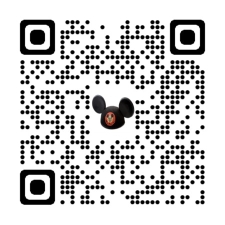Record Breaking Performer Who Once Lived Inside Disneyland
ID:
TMS-5864
Source:
SFGate
Author:
Julie Tremaine
Dateline:
Posted:
Status:
Current
In the days before Disneyland’s official opening, Walt Disney held a private party at the Golden Horseshoe, the Old West-themed restaurant in Frontierland. Called the “Tempus Fugit Celebration,” the 300-person event had two functions: to toast Walt and Lillian Disney’s 30th wedding anniversary and to kick off the festivities surrounding the July 17, 1955, grand opening of the world’s first truly immersive theme park.
The July 13, 1955, party was auspicious for another reason, too. It was the first performance of a stage show that would last nearly 30 years, set a world record that’s still in place today and anoint a “clown prince” of Disneyland. For decades, Wally Boag was one of the most famous and sought-after celebrities in the park, right up there with Mickey Mouse and Walt Disney himself.
“All of us there that night knew we were going to be a part of something that was very special and wonderful, and that the adventure was just beginning,” Boag wrote in his 2009 memoir, “Wally Boag, Clown Prince of Disneyland.”
Long before he had the starring role in the Golden Horseshoe Revue, Boag, born in Oregon, was a traveling comedian and vaudevillian who had started performing for his family at age 5 and began his formal training at 7. After inviting him to audition at the studio in Burbank, Disney signed the then-34-year-old Boag to a two-week contract; it was eventually extended for 27 years.
In the revue, Boag played various characters, including Old West legend Pecos Bill, a mythical Americana figure similar to Paul Bunyan and Johnny Appleseed. Another character was, according to Boag’s own description in the show, a “loud, long, lean, loquacious, sometimes laconic lunatic who loves to deal, delve, and dabble into delirious dialogues and dynamic dissertations … In other words, I’m a traveling salesman.” He’d sing, play the bagpipes, make balloon animals and do gun tricks onstage, and then between shows, he’d go into Frontierland to have fake shootouts with other performers. His antics earned him the nickname “clown prince” as the park’s resident comedic performer.
The schedule was grueling: five shows a day for five days a week. Though his family lived in Los Angeles (and later Orange County), Boag would often find himself sleeping in his dressing room, in the building that now houses River Belle Terrace. Like Owen and Dolly Pope, who lived on the property to care for Disneyland’s live animals, Boag had access to elements of the park that guests would never see. “I could sleep in my dressing room, I had a shower, and, of course, there were plenty of places to eat,” Boag wrote. “Aunt Jemima Pancake House was below my dressing room, and I was often the first customer in the morning.” (Like the Pope House, which is still standing today in a backstage area of Disneyland, Boag’s apartment still exists above the restaurant, though now it’s likely storage or office space.)
“Walt was so good to take care of his performers, and he insisted on providing great living quarters for us,” Boag wrote. “He wanted to ensure we had a comfortable place to rest and relax between the five or six shows we did every day.” Friends would drop by, and sometimes Disney himself would, too.
His young children, Tracy and Laurence Boag, would often stay with him. “I shot some great home movies of Tracy running around Disneyland before it opened for the day,” Boag recalled. “She thought she should be the mayor of the place.”
Speaking to San Francisco’s Walt Disney Family Museum in 2025, Laurence recalled those times in the park. “I used to love to go out and walk around when the park was closed,” he said. “You’d see the gum-scrapers out there with bottles of [rubbing] alcohol and razor blades. They’d sit on roller-boards and go along scraping, keeping the park clean. Others would be hosing down things. Some would be re-painting the shooting galleries and [queue] chains everywhere. They’d be tuning the engines for the Jungle Cruise boats and Autopia cars. We’d visit the horses in the stables.”
The revue was so popular that people would rush to get reservations as soon as they entered the park, or risk being turned away in the standby lane. When Walt Disney was in the park, Boag recalled, staff would call ahead to the Golden Horseshoe’s stage manager to reserve his private booth. Sometimes, Disney would watch the show more than once in a day. “I can’t remember how many times I’ve seen the show, but I always find it stimulating to be there and watch the responses of the audience,” Disney wrote in a 1959 letter to Boag, “and although I practically know the routine by heart it’s always new and exciting.”
Boag was also a major influence on one of the greatest entertainers of the next generation. Steve Martin started working at Disneyland at age 10, selling copies of the Disneyland News (an actual newspaper produced by the company) on Main Street U.S.A. In his introduction to “Wally Boag, Clown Prince of Disneyland,” Martin wrote that he would sneak into the saloon to watch Boag’s show nearly every day that he worked, and that Boag taught him the fundamentals of comedic performance.
“Wally had something about him, an infectious happiness and a mysterious something else I later learned was called comic timing,” Martin wrote. “Everything he did had a rhythm, and it all came together in a kind of comedic concert as he charmed and teased the audience. There was a gentleness to his comedy, a feeling that you were being let in on some special secret. And there was also a dose of naughtiness about him, which worked well in the squeaky-clean Disneyland environment.”
Martin was, in turn, a mentor to Laurence Boag. When the future superstar graduated from selling papers and got a job at Merlin’s Magic Shop, the younger boy would hang around the shop, learning tricks from Martin, who was four years his senior. “I passed countless hours at Merlin’s Magic Shop bugging him,” Laurence recalled in Boag’s book. “He was a fan of Dad, so he humored me. He gave me direction. He gave me a goal. I set out to learn every magic trick he demonstrated. I bought them all. I practiced.” When Martin got a job performing at Knott’s Berry Farm, Laurence took over his position in the Main Street magic shop. “I just never had his panache,” Laurence wrote. “Oh, well.”
Boag retired in 1982, after nearly 40,000 performances, including a brief stint in Orlando to open Walt Disney World’s version of the show in 1971. The Golden Horseshoe Revue ran until 1986. It still has a spot in the Guinness World Records as the longest theatrical run for a revue. When it finally ended, the show clocked 47,250 performances and had been seen by 16 million people, according to the Guinness World Records. Today, the Golden Horseshoe is a quick service restaurant; the company cut its live entertainment in 2024.
Boag’s show hasn’t totally been lost to time. He performed some of the revue’s signature acts in a 1980 episode of “The Muppet Show.”
The revue, former head of Imagineering Marty Sklar wrote in his preface to Boag’s book, “was a great example of Walt’s credo to always give the people more than they expected. And no one gave our Disneyland guests more than Wally Boag did.”
Attractions Referenced In This Article:
Restaurants Referenced In This Article:
Shops Referenced In This Article:
Lands Referenced In This Article:





